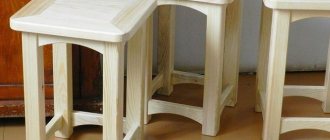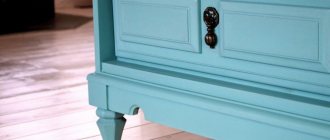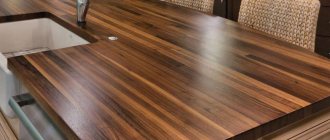Despite the popularity of plastic double-glazed windows, many homeowners prefer traditional wooden windows. Such structures, in comparison with plastic ones, have many advantages: they are environmentally friendly, safe, and most importantly – very durable. However, wooden windows require constant care. Over time, the paint layer and protective impregnations wear off and require replacement. The right paint for wooden windows will help maintain the color of the window frame and its integrity for a long time.
What paint to choose for wooden windows
Novice craftsmen often do not know what paint is best to paint wooden windows. The wood coating must have the following characteristics:
- increased resistance to moisture, pests and fungus;
- elastic structure that can withstand expansion from moisture;
- a breathable, porous surface that will allow air into the room.
These paint characteristics will not only extend the life of the windows, but also improve their performance. Knowing the characteristics of different materials will help you figure out which paint to choose for painting wooden windows.
Preparatory work
After installing the window, there remains a wide gap between the slope and the frame. It’s easier when the window sill is replaced. The opening remains intact; the craftsman only needs to prepare the hole for the panel. It may not always coincide with the dimensions of the new item, then both objects will need to be adjusted.
For sealing you will need polyurethane foam
Preparation may include the following steps:
- Inspection of the panel opening. If necessary, it expands so that it is 2 cm wider than the frame on each side.
- Clean the hole from crumbs and dust, treat it with a mold and mildew agent in accordance with the instructions.
- Raising the level of the support platform if the clearance exceeds 5 cm.
- Cutting out the slab to the required size. The optimal protrusion is considered to be 10-15 cm beyond the wall level. Cutting to width, fitting the product to the opening.
- Rounding corners, grinding and polishing.
- Preparing material for spacers. These can be bars, pieces of plastic and other improvised items.
Finally, the wooden panel is primed and coated with a topcoat.
Paints and varnishes for interior and exterior window decoration
Alkyd paints are usually used indoors. They have an elastic structure and give the windows an aesthetic appearance. The flexible structure of the coating is achieved thanks to oil inclusions.
For outdoor work, more durable coatings are required, such as acrylic and nitro paint. Such paints and varnishes dry very quickly, and they do not have a strong odor, and after drying, a durable film is formed on the window frame. However, paints are not suitable for window sills. You can figure out how to paint wooden windows only by taking into account the characteristics of different materials.
Photo
The template is outlined in pencil
Assembling the rack template
Dimensions must be taken with maximum accuracy
The edges of the window sill go into the wall
On the other side
Check the level
Universal paint
If you want to save money on painting wooden windows, purchase universal paints. Such coatings can be used for both interior and exterior work. Universal paints and varnishes include atmospheric glossy enamel.
When purchasing a coating, pay attention to its resistance to temperature changes and precipitation. In the realities of the Russian climate, it is recommended to use alkyd enamels and water-based acrylic coatings.
Characteristics of various paints
In addition to the above coatings, oil, enamel and adhesive paint compositions are used to paint wooden windows. To decide which paint to use in your home, compare all the climate characteristics: humidity, precipitation and temperature differences. It is also important to consider the condition and type of wood being painted.
Polyurethane and acrylic coatings
Acrylic and polyurethane based paints are considered the most resistant to adverse conditions, especially moisture. Such coatings contain toxic organic solvents, which make the composition durable. Among these two types of paints, polyurethane paints are more durable and extremely wear-resistant, which is why they are recommended for use in exterior decoration. However, polyurethane paints have one drawback - high cost. In this regard, acrylic ones are inferior to them, which is why they are more popular among novice craftsmen. It is also important that acrylic coatings can be diluted with water and mixed with pigments to obtain complex shades. However, white paint is most often chosen.
Alkyd paints
Today, alkyd paints are increasingly being chosen. In addition to resistance to weather conditions, this type of coating has another advantage - it can withstand treatment with aggressive detergents and oils. The paint composition applied to the primed surface can last up to 5 years. Such paint can withstand temperatures from plus 60 to minus 50. This paint is good for application to coatings located outdoors.
Nitrocellulose window coverings
Nitrocellulose paints are also suitable for treating wooden window frames. The only feature that is worth remembering when using such coatings is the mandatory active ventilation of the premises during operation and drying. The paint contains acetone, which releases vapors after application. In addition, the paint burns very easily, so it should be stored away from sources of ignition. White coatings are very popular.
Increasingly, homeowners are coating their window frames with transparent compounds. Varnishes perfectly protect wood and allow you to admire the natural structure of the material. The composition of transparent varnishes is identical to alkyd enamels, with only one difference - coloring pigments are not added to the varnishes. Choosing such a material is the best solution if you want to preserve the texture of the wood. The main condition is that the selected material must meet the operating conditions.
Do-it-yourself painting of wooden windows
Before processing a wooden frame, you need to understand that different species require different work:
- oak does not require moisture impregnation, but they need to be protected from woodworms and other pests;
- pine absorbs moisture well, so it simply needs treatment against water and pests;
- Larch, unlike oak and pine, is resistant to both pests and moisture, so it does not need impregnation.
It is recommended to impregnate any wood with fire retardants, this will increase the safety of structures.
Maintainability
The strength characteristics of the varnish are somewhat higher, but when choosing, you should take into account operating conditions and maintainability.
- For intensive use and use of the product in aggressive environments, it is better to give preference to varnish. It should be borne in mind that varnish, unlike oil, is not repairable in domestic conditions. If the varnish surface is damaged (scratches or abrasions appear), you will have to sand off and re-varnish the entire surface. This is not done at home. Professional factory repairs will be required.
Products coated with oil and hard wax, if abrasions appear, can be easily restored at home independently (without the involvement of qualified craftsmen). A damaged surface that has lost its shine can simply be treated with colorless oil by rubbing it in with a linen cloth.
Painting tools
Before any work, you need not only to buy a high-quality coating, but also to prepare all the tools. If you don’t know how to paint wooden windows with peeling paint, start by preparing the surface. To do this, the coating is sanded and small nails, chips and other protrusions are removed. The working surface should be as flat as possible. For work you will need the following tools:
- pliers, cutters and other devices for removing screws and nails;
- spatulas and sandpaper to remove paint if it has peeled off;
- When disassembling, be sure to remove the glazing beads; to secure them after cleaning, you need a hammer;
- for small frames you will need brushes, for large ones you can use rollers;
- containers or cans for paint;
- To remove glazing beads, a nail puller is needed; it is also used to remove the sashes;
- You will also need putty and a spatula for it; the composition is used to treat dents and chips of old frames;
- antiseptic composition for wood processing;
- solvent for removing paint from brushes and glass.
Helpful Tips and Tricks
It is very important to choose the right time for painting work, this will ensure excellent adhesion of the paint to the wood. It is optimal to paint windows on a warm, not very sunny day (as ultraviolet radiation destroys paint pigments). It is best if there is low humidity on this day. For most paints, the optimum humidity is less than 80 and the temperature is above 5 degrees, but even under these conditions the coatings dry perfectly.
It is not recommended to apply paint to a new frame that has just been purchased, or to a product that is wet from rain. This will cause the coating to bubble, which will peel off after drying.
Also, the paint can peel off due to a poor base and unfavorable indoor conditions. It is recommended to carry out wet cleaning to remove dust and dirt at the place where painting will be done. You should also learn how to remove the old coating.
What can you do to secure it?
The use of varnishes will help increase the durability of the new coating; you can use other means suitable for fixing paint on window sills.
It is necessary to choose options that use similar components as in the main paint, then a chemical reaction will not form.
The use of varnishes will help increase the durability of the new coating.
Method for removing old paint
Before applying the coating to the old frame, you need to remove the first layer of paint; to do this, use the following technology:
- The window frame is heated with a hair dryer or blowtorch. A layer of coating that is not very old will quickly begin to bubble, which will allow you to remove all the paint with a spatula. If this method does not work, you will have to soak the frame with solvent and remove the paint with scrapers and spatulas.
- It is important to prepare the frame itself; it should be smooth and easy to close. If there are problems with slamming, it is necessary to grind off the unevenness that prevents closure. For such work, grinding equipment is used. Cleaning the coating is done carefully, otherwise the wood layer may be damaged.
If you cleaned the paint with a solvent, be sure to thoroughly dry the frame after the procedure.
To understand how to clean wooden windows from old paint, you should use not only solvents, but also special liquids for removing old coatings. Similar substances can be purchased at a hardware store. To remove paint, apply liquid to the surface and wait until the paint turns into lumps. The resulting mass can be easily removed with a spatula or a stiff brush. This cleaning will ensure ease of subsequent work.
Preparing a window for painting
In order for the frame to look neat after applying paint, it is necessary to remove all fittings, the doors themselves, and protect the glass before painting. If latches and hinges are faulty, they are repaired and replaced. Locks and handles that cannot be removed are simply wrapped with masking tape to protect them from paint. This will avoid unnecessary cleaning.
In addition to fasteners and handles, glass sheets also need to be prepared for painting. Most often, white paints and varnishes are used for coating, which after drying are very noticeable on the glass. Therefore, even before mixing the paint, the joints of the frame and the glass are sealed with wide masking tape on both sides. For novice craftsmen, it is better to cover all the glass with newspapers. We paint the frames carefully so as not to create unnecessary work for ourselves.
It is not recommended to use old glazing beads for glass on old frames. Such structures wear out quickly, so it is better to replace them with new ones. To prepare, new glazing beads are sanded, coated with primer and paint. After drying, they are nailed to the frames. We choose high-quality coating materials so that after a while we do not have to replace some elements with new ones.
Why do you need putty?
Adherents of old technologies use a mixture of rosin, wax and turpentine for priming. Today, such compositions have become obsolete and are rarely used. Construction departments are full of a variety of primers, putties and other compounds intended for painting. Most often, acrylic materials are used to prime the surface of wood. Applying putty includes the following steps:
- The frame is inspected for damage. If metal parts are worn out or have cracks or areas of rust, they are treated with a metal primer.
- Before applying the primer, the surface of the wood is impregnated with an antiseptic. This measure will protect the array from beetles and rot, which will significantly extend the service life of the structure.
- After applying the antiseptic, the frame is re-inspected. Antibacterial impregnation will not cover serious cracks and chips; these are the ones that need to be covered with putty. The procedure is performed in stages, filling the cracks over and over again. If you put a large layer of material on the wood, it will fall off along with the paint.
- If the cleaned window frame is planned to be painted, then the putty is applied in a middle layer (the material will not be visible under the white paint). For processing under varnish and stain, the putty is tinted to match the color of the solid wood. You can also make your own putty composition from epoxy resin and wood fibers.
- First, apply the composition on the chips in one layer and wait for it to dry. After this, the layer is cleaned of nicks and protrusions.
- After drying, apply a second layer and also clean it.
- The procedure is carried out until the frame becomes level.
Painting the frame in several layers
After puttying, the frame becomes smooth, which means the paint will lie evenly. To ensure that the coating has a dense surface, a multi-layer application method is used. Painting is quite simple:
- the working surface is cleaned of dust and dirt so that the fresh paint does not form lumps;
- the composition is opened, mixed and filtered through a fine mesh.
Some craftsmen apply paint from a can to the prepared coating, which is highly not recommended. As a rule, various coating materials are sold very thick, and a thick film of paint and solvent forms on their surface. When applied, this composition produces a thick layer that will drip down and form thick accumulations of paint. Such a coating will not look aesthetically pleasing, and will quickly crack over time.
It is not recommended to pour the entire jar into the dilution vessel. Add a little paint to achieve the desired consistency. You should not choose the solvent yourself; ask a consultant about what composition is recommended for this coating.
The first layer of paint is made liquid so that it penetrates into the structure of the array. Before applying a second coat of coating to an already painted surface, the first one must be completely dry. The third layer promotes adhesion to wood. For two finishing layers, the composition is made thick to prevent drips. If drops and accumulations of paint form, they are removed with a cloth with a solvent. You should not wait for the drips to dry; they quickly harden and spoil the appearance of the entire frame.
When painting a window frame, the brush is lowered into the vessel only halfway. This will protect the instrument from the formation of excess and constant leaks. Coating begins on the side that faces the street.
Window frames are painted with a flat brush; it creates a flat and even stroke. To ensure an even line, place the brush on top of the frame bar and release it, allowing the brush to move under its own weight. Under the force of gravity, the tool draws a smooth, almost perfect line.
After completely painting the window, you need to wait until the frame is completely dry. Only after the coating has completely dried is the protective tape removed. It is worth remembering that before work you should remove the paint from wooden windows.
Once you become familiar with the features of different coatings and application rules, you can paint the windows yourself without the help of specialists. When choosing a coloring composition, you should correlate its characteristics with the operating conditions of the coating.
I need advice on what is the best way to paint a new wooden pine window sill; it has not been painted or treated with anything before. I want its appearance to be beautiful and at the same time not to deteriorate from external influences (the window sill is installed in an unheated room).
If the room is unheated, then it is better to choose oil impregnation. The oil is absorbed into the wood, and this will strengthen the surface of the window sill, make it moisture resistant, and a silky shine will appear. Oil impregnations are made from wood and linseed oils, natural modified resins. They are used to strengthen and protect wood products. Can also be used for tinting. It is better to choose oil without solvents. There are natural oils that take a very long time to dry. But they are the ones of the highest quality.
The wooden window sill is located indoors, so you can use paint for interior work on wood.
In terms of composition, these can be oil paints, acrylic, alkyd, etc., most importantly for wood.
If the window sill is painted correctly, then after proper preparation (this is a whole series of measures including putty and primer, sanding, if the wood releases resin, we remove it, etc.), then it is better not to use either brushes or rollers.
Both the roller and the brush leave “smears” on the saucer, the pouring method or spray is better, this is where we start when choosing paint; it should not be of a thick consistency.
Since there may be some plants in pots on the windowsill, and the window sill itself is often washed (that is, moisture), there may be condensation from the windows on the windowsill, it is better to take moisture-resistant, washable paint.
Well, plus, of course, the environmental friendliness of the paint should be at the level.
This is the acrylic paint for wood “RENOTON”.
This is a vapor-permeable paint; the wood will “breathe” underneath it.
The window sill loses its original appearance during use. No matter how careful you treat it, sooner or later chips and scratches will appear on it, and if one of the family members has a habit of smoking near the window, then traces of an accidentally left cigarette. In my opinion, in most cases, repairing a window sill with your own hands will cost much less than purchasing and installing a new structural element of a window.
Installation
When the base is ready, you can begin the installation of the wooden window sill. Typically, this process is carried out using a cement mixture. That is, it is necessary to prepare a certain amount of cement-sand mixture. Here we can say that there should be enough solution so that it hides the upper planes of the wooden wedges used to level the plane by 3–5 mm. After this, the wooden window sill is laid on top and pressed down. Excess solution is simply removed with a spatula.
How to restore a plastic window sill?
Plastic window sills are by far the most popular. They are affordable and easy to use, but they are easy to burn with cigarettes and scratch. Usually this part of the window is white, so any stubborn dirt on it is noticeable. How to restore the original appearance of a plastic window sill?
How to clean dirt from plastic?
If a product made of plastic that is resistant to mechanical stress and moisture has yellow marks left from pots with indoor plants or there is ingrained dirt that cannot be removed with a damp cloth, improvised means will help restore it to its original appearance. The table provides information on how to use them correctly:
| Components | Preparation | Application |
| Dishwashing liquid | Dilute the product with a small amount of water. | Apply the solution to the product, brush with a stiff bristle brush, leave for 30–60 minutes, then rinse with clean water. |
| Laundry soap | Dilute grated soap with warm water to the consistency of sour cream. | |
| Washing powder | Mix the powder with a small amount of water. | |
| Window cleaner | No preliminary preparation is required. | Spray the liquid liberally onto the surface of the window sill, scrub with a stiff bristle brush, and rinse with clean water. |
| Vinegar | Dilute vinegar and water in equal parts. | Apply the product, leave for 15–20 minutes and wipe with a damp cloth. |
| Vinegar, soda | No preliminary preparation is required. | Sprinkle baking soda on the contaminated areas and add vinegar on top. After the end of the chemical reaction, wipe the window sill with a damp cloth. |
Caring for the window sill
Plastic window sills should only be used indoors. They should not be subjected to shock or sharp objects. Do not place heating or heating devices, water containers, or flower pots without stands on the surface.
It is recommended to wash the product with non-aggressive means. It is not advisable to use abrasive powders or chlorine-containing bleaches. Prolonged exposure to direct sunlight is not allowed.
Now he is an active foreman at a large construction company engaged in the development of cottage communities and the construction of private houses. Previously, for 14 years, as a contractor, he was engaged in the construction of houses and renovation of residential premises.
How to restore the decent appearance of a wooden window sill?
Repairing a wooden window frame requires painting. Before painting the product, you need to check if there are any cracks or dents on it. The method of preparation for painting depends on the presence of defects. It is also important to choose the right coating materials. If you use the wrong paint, there is no point in hoping to get a high-quality and durable coating.
How to repair cracks, dents and level the surface?
Before you begin to repair cracks and dents, remove the previous coating from the working surface. This can be done using sandpaper, a special solution or a hot air gun.
Preparing for coloring
After puttying, the product is treated with impregnation and primer. These products will allow you to achieve better adhesion to the working surface and prevent the appearance of fungus. They must be applied according to the following scheme:
- Treat the wooden window sill with impregnation.
- After 1 hour, prime the product.
- After the primer layer has completely dried, apply several layers of putty, leveling them well.
- Sand the window sill using sandpaper. You should start sanding only after the putty has completely dried.
Painting a wooden window sill at home can be done in an unusual way, without using a brush, roller, spray gun or other tools. Having covered the floor with several layers of dense polyethylene, you need to pour the paintwork onto the product to be painted, achieving uniform distribution over the surface. This should be done in small portions. When the coating has dried, you need to remove small irregularities and drips by going over the appropriate areas with sandpaper. At the end of the work, the window sill is varnished, and after the coating has dried, it is sanded.
What is the best way to paint wood?
To paint a wooden window sill, it is recommended to use the following types of paints and varnishes:
- Alkyd enamel. This paint is durable, elastic, moisture- and color-resistant. In addition, it dries quickly and does not turn yellow.
- Acrylic coloring composition. Water-dispersion paint based on polyacrylates has no strong odor, is easy to use, dries quickly, is breathable, and forms a strong and durable coating.
No. 3 – Euro Extra-20 from Tikkurila
If we continue the conversation about environmental friendliness and safety, it is worth noting the product of the Tikkurila company - water-dispersed paint Euro Extra-20. According to the VOC European Directive, this product fully complies with the standards for the content of volatile substances that are safe for health. When applied to surfaces, it does not emit any odor.
A distinctive feature of Euro Extra-20 paint is its excellent moisture resistance. On window sills, which are often exposed to condensation or moisture when watering indoor plants, this is especially true. Having painted a wooden window sill with this paint, you don’t have to worry that it will turn black from mold or swell.
According to the technical specifications, Euro Extra-20 has the following main characteristics:
- consumption when applied to unprimed wooden surfaces – 1 liter per 6 m2;
- drying speed at a temperature of +20 0 C and a humidity of 65% – 4 hours;
- Time to achieve wash resistance is 1 week.
How to renew a concrete window sill?
There are 2 ways to repair a concrete window sill. First method:
- Remove old paint. If the product has not been painted, you should immediately proceed to the second step.
- Clean the surface.
- Prime the product.
- Putty.
- Prime the surface again.
- Apply paint.
Scheme of the second method of restoration of a concrete window sill:
- Remove old paint with an electric hair dryer, gas heating pad, etc. If the thickness of the old coating exceeds 3 mm, remove it with a construction hammer.
- Clean the surface.
- Prime.
- Place the formwork on the edge of the product and apply a mixture of equal parts of fine crushed stone and cement.
- After 48 hours, sand the surface.
- Paint or lay tiles.
The listed methods for restoring the covering of a window sill with your own hands are noticeably cheaper than replacing the latter. I suggest watching a video that presents the work experience of experienced people.











